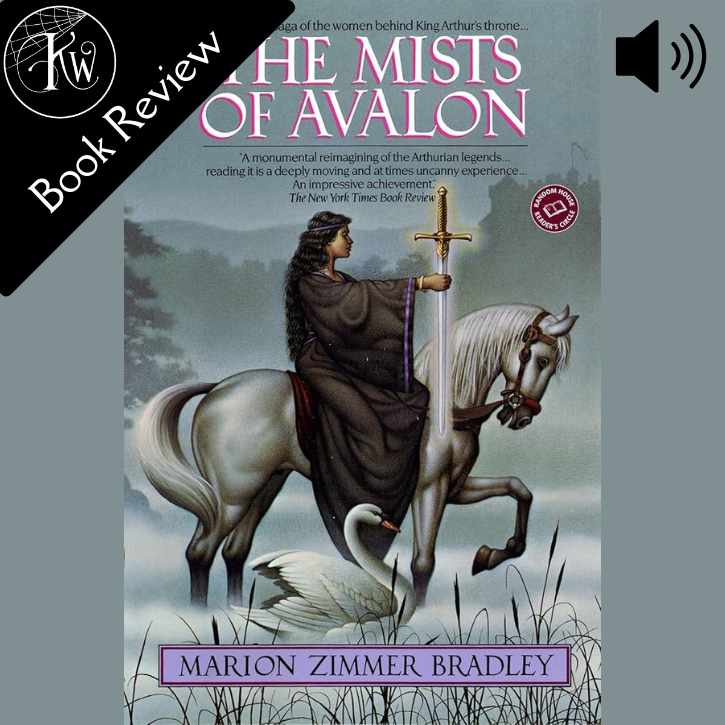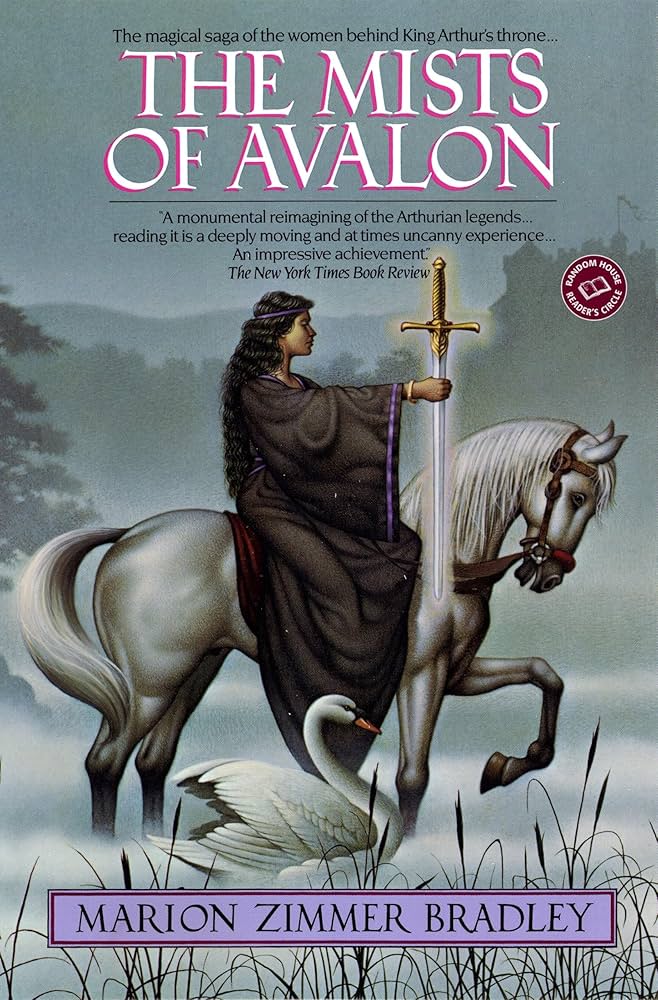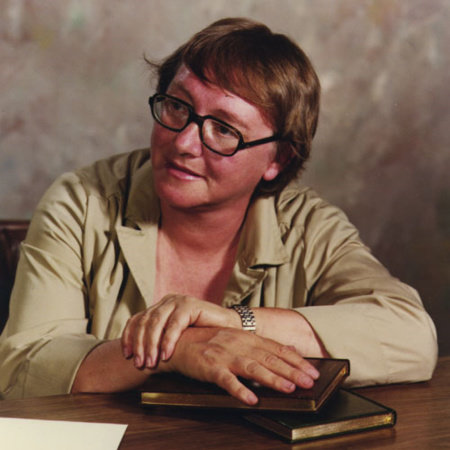Issue #21: The Mists of Avalon
Reactions to an important feminist, fantasy saga--an epic tale from the perspective of the women

Book Review
The Mists of Avalon by Marion Zimmer Bradley
This book is an important piece of feminist fiction! Although lengthy, the nuance and flip in perspective is profound. Entering a world where women held power, status, and had complete control over their sexuality was, well, empowering! I loved the embrace and celebration of life–no matter how it entered the world–and the portrayal of the Death Crone as an important and sacred position, one of mercy and love.

Book information and ratings:
The Mists of Avalon Books 1-4 | by Marion Zimmer Bradley, 1982 | |
Genre: | Fiction, fantasy |
|
Subject: | Classic tale from women’s perspective | |
Rating: | Worth the read | |
Read as: | Print copy | |
Readability: | Moderate | |
Subject Weight: | Moderate | |
How I found this book:
Have you ever been haunted by a paperback?
Well, The Mists of Avalon followed me around for 8 years in a spooky kind of way: I inherited this book from the dirt-and-rock basement of my rental house; it then got thrown in with all my other books during the move; it then survived 2 trips to the used book store and 1 garage sale; and, then it sat patiently waiting for me on my husband’s side of the bookshelf.
I read somewhere that this book was an important piece of feminist fiction, and, with that little hint floating around in my brain, this title whispered to me as I was sinking into my personal holiday hell-hole that is Christmas.
I needed an escape…something new, something different, something to float away on…
Wait. What’s that over there in the mist? Oh, hello, Avalon!
****
I told Sheri that I put all my other books down to read The Mists of Avalon–thinking she would find it interesting, and I could tell her all about it. Instead, her blue eyes popped and her mouth dropped open, as she said, “I just ordered a copy of that book…I think it will be here Monday!”
We had never discussed this title together.
Ghostly murmurs from the bookshelf? And synchronicity with my best friend? All converging at Midwinter…?
Ummm…ok.
About this book:
The Mists of Avalon is the retelling of the Aurthurian legends from the perspectives of the women. It was written by Marion Zimmer Bradley and published in 1982.
****
Sagas
I’ll admit I’m not one for sagas. This story (all four books together) is 876 pages. In these types of long, extended stories, I usually get a little lost or bored with the brace of characters you have to follow around and keep track of. I also find that the quantity of characters competes with the quality of personally knowing the characters–and I often finish the story without really feeling invested in any of them.
Additionally, these long tales lean heavily into politics. I mean, that’s the point of a storyline barreling down through the generations, right? But, I hate politics. By the time everyone is grabbing for power and manipulating for control, I am HUGELY bored. It’s probably important…but it just isn’t interesting (to me, anyway). So, people are greedy and egotistical and have outsized views of their intelligence, influence, and power and are obsessed with asserting their own dominance? Same in that world. Same in this world. Got it. Moving on…
The Mists of Avalon has all of these things: lots of characters (some with similar names, I might add: Balin and Balan or Morgaine and Morgause…Ahhhh!) and LOTS of strategic political maneuvers. But what kept me going through all 800 pages was the clash between Christianity and the pagan/druid/goddess worship–which was the major theme of this story.
BUT, the one thing that sagas can do that shorter works can’t do nearly as well (or at all) is work outside of the binary. The larger context and wider nuance blurs the line between the “good guys” and the “bad guys”…or in this case, almost completely erases it.
I said that this book is about the “clash” between Christianity and paganism…and that’s what I saw and felt through the whole book, because I approached this book with a binary mindset. BUT, that mindset left me confused, especially at the end, and I had to recalibrate with Sheri’s wisdom in order to land on my feet!
****
The Lands
In this book, Camelot is the mainland, but there are several islands (including Avalon) and other lands, such as the lost land of the faerie. Looking back, I can see here that the author is presenting more of a gradient than a binary. This isn’t about Avalon vs. Camelot. This is about the land of the faerie that is lost (except to a very few who can find their way there) and the island of Avalon which is becoming more and more lost and obscured by the mists. Camelot, the shiny, young, larger kingdom (which unites many smaller kingdoms) is also supposed to bring the islands out of the mists and reunite them with the real world.
This is the pivot point. Arthur is a Pendragon of the pagan order and also the ordained Christian king. He is set up as the savior, the one to unite the new and the old, to stop the strife, to bring all the peoples together.
And, this is where we step into something REALLY interesting, because in the Arthurian legends, the men are all bright bravery and fiery loyalty and the women are shiny (or shadowy) pawns…but in this book, these roles are reversed. For example, I expected Arthur to be the same golden king of goodwill and honesty I read about in other stories, but I found myself consistently frustrated and surprised with his lack of conviction and wavering integrity. He was actually a severely shallow people-pleaser (!), which led to instances of gross misuse of power and serious betrayal of his sacred oaths.
But, it’s not just Arthur: in this story, the men wander around the scene-scape like flat paper dolls while the women are full of vivacious energy and power. Like, Morgaine…
****
Morgaine
Even though there are lots of characters to follow in this story, there is one who is consistent through all four books and the only one whose perspective we hear besides the omnipotent narrator–and that is Morgaine.
You might remember her as Morgan le Fay, or Morgan of the Fairies, King Arthur’s sister, who isn’t considered trustworthy or safe in the other tales. This story presents a different and deeper narrative. It is her voice that presents the prologue and then leads us through this epic tale:
Morgaine speaks…
In my time, I have been called many things: sister, lover, priestess, wise-woman, queen. Not in truth I have come to be wise-woman, and a time may come when these things may need to be known. But in sober truth, I think it is the Christians who will tell the last tale. For ever the world of Fairy drifts further from the world in which the Christ holds sway. I have no quarrel with the Christ, only with his priests, who call the Great Goddess a demon and deny that she ever held power in this world. At best, they say that her power was of Satan. Or else they clothe her in the blue robe of the Lady of Nazareth–who indeed had power in her own way, too–and say that she was ever virgin. But what can a virgin know of the sorrows and travail of mankind? (p ix)
****
The Fires of Beltane
One of the biggest differences I observed between the pagans and the Christians was the embrace of healthy human sexuality on one side and the painful restrictions of purity culture on the other side. The Fires of Beltane, for example, were quarterly Goddess gatherings marked by rituals (including sexual rituals) and imbued with sexual permission. If one felt called to copulate with anyone at the Beltane fires, it was honored and sacred–and any child born of those unions was considered a “child of Beltane” and also honored and sacred to the community. I found this vastly refreshing and healthy beside the Christian tradition of shunning and punishing bastards.
Also on the Christian side of this story, we have the enduring and agonizing tension among Arthur, Gwynhwyfr, and Lancelot. This love triangle haunts all three characters and breeds intense misery (even though, at one point, they attempt an interesting solution to this problem of attraction…), and one can’t help but wonder: what if Gwynhwyfr and Lancelot were given full permission to act on their desires at the Fires of Beltane? How much of this agony could have been avoided or reconciled?
But, the Fires of Beltane is also where we start to see things slipping sideways for the pagans, particularly when the high priestess manipulates the crowning of Arthur–king of the stag. This particular ceremony is a gross misuse of the Goddess’ power and deeply, darkly underhanded, forcing 2 young people into questionable actions without prior consent. The consequences of this event ripple through the rest of the story.
****
Mother-wound
Unlike the Christian nuns, the women of Avalon do have children. The high priestess Morgause, for example, has four children with four different men. The priestesses have full control and power over who they have sex with and when and for what purpose. BUT, in almost every instance, the children are sent to live with foster families until they are adults.
At first I thought this tradition made sense–that it was wise to share the burden of childcare. Some women did the work of mothering and some women did the work of leading or learning. BUT, every foster child sustained a massive mother-wound from this arrangement. Surely this can’t be the will of the Goddess, the mother of the earth, to have children damaged in this way? Why wasn’t there a more loving and intentional mother-child bond/relationship?
Both Christians and pagans participated in this foster child culture. It was damaging all the way around. And, I think this is one instance where we can see the religion of the Goddess has already been corrupted.
****
Sheri’s perspective
I read this book in print form, and it took me 2 months to get through it. Sheri started reading her print copy and then switched to the audio version, and she finished it before I did. Where I was trudging through the printed detail and working hard keeping the characters straight, she ended with a better understanding of the characters and greater overview of the story.
So, our coffee discussion was interesting! Sheri helped me identify why I was so uncomfortable and why everything felt so messy after I finished the book. She explained that by the time this story begins, the religion of Avalon is already perverted–they have already embraced the tools of the patriarchy and are using them to combat Christianity. The lost faerie land is the purity of the Goddess, but is already lost. The dominance of the patriarchal Christian religion was inevitable, and this story follows the slow smothering of the pagan religion.
Although, it is a gradual taking-over, there are a couple of definite turning points. The public murder of the high priestess, who was then serving as the embodiment of the sacred role of the Death Crone, is one. The Miracle of the Chalice is the other. The Goddess is powerful and doesn’t go down without a fight! I was completely fascinated by the trajectory of this literal miracle, because it was the catalyst for the crusades…which turned out to be a curse and a rending of the kingdom, not a blessing.
“Oh, and didn’t it make so much sense at the end as to why Gwynwyfer couldn’t stay pregnant?" Sheri asked me. I had no idea what she was talking about! So, she pointed out a very important and dark detail that is shared at the end of Book 4, which takes the manipulation and strategizing for the throne to a deeper and shocking level.
****
Altogether, I agree with the assertion I heard: this book is an important piece of feminist fiction! Although lengthy, the nuance and flip in perspective is profound. Entering a world where women held power, status, and had complete control over their sexuality was, well, empowering! I loved the embrace and celebration of life–no matter how it entered the world–and the portrayal of the Death Crone as an important and sacred position, one of mercy and love.
My main criticism would be the author’s homophobia. This was the only thing (perhaps?) that betrayed the fact that this was written in the 80s. A few homosexual encounters are hinted at, but still treated with trepidation and distinctly NOT celebrated. In a better world, how might the author have included queer love to enhance our understanding and expand on this profound story?
About the author:
Marion Zimmer was born in Albany, NY, on June 3, 1930, and married Robert Alden Bradley in 1949. [She] received her B.A. in 1964 from Hardin Simmons University in Abilene, Texas, then did graduate work at the University of California, Berkeley, from 1965-67.
She was a science fiction/fantasy fan from her middle teens and made her first sale as an adjunct to an amateur fiction contest in FANTASTIC/AMAZING STORIES in 1949. She had written as long as she could remember, but wrote only for school magazines and fanzines until 1952, when she sold her first professional short story to VORTEX SCIENCE FICTION. She wrote everything from science fiction to Gothics, but is probably best known for her Darkover novels.
In addition to her novels, [she] edited many magazines, amateur and professional, including Marion Zimmer Bradley's FANTASY Magazine, which she started in 1988. She also edited an annual anthology called SWORD AND SORCERESS for DAW Books.
In her later years she turned more to fantasy; THE HOUSE BETWEEN THE WORLDS, although a selection of the Science Fiction Book Club, was "fantasy undiluted." She wrote a novel of the women in the Arthurian legends -- Morgan Le Fay, the Lady of the Lake, and others -- entitled THE MISTS OF AVALON, which made the NY Times best-seller list both in hardcover and trade paperback, and she also wrote THE FIREBRAND, a novel about the women of the Trojan War. Her historical fantasy novels, THE FOREST HOUSE and LADY OF AVALON, are prequels to MISTS OF AVALON.
She died in Berkeley, California on September 25, 1999, four days after suffering a major heart attack. She was survived by her brother, Leslie Zimmer; her sons, David Bradley and Mark Greyland; her daughter, Moira Greyland; and her grandchildren.
Her literary estate is managed by the Marion Zimmer Bradley Literary Works Trust. Ann Sharp is the trustee. Elisabeth Waters, Mrs. Bradley's secretary, still works for the Trust and calls her position "the job that will not die."
https://www.mzbworks.com/bio.htm[Marion Zimmer Bradley] was posthumously awarded the World Fantasy Award for Lifetime Achievement in 2000. https://www.penguinrandomhouse.com/authors/3016/marion-zimmer-bradley/
Sources:
Bradley, Marion Zimmer. The Mists of Avalon. New York, Del Rey, 1982.
*This is issue #21 of the The Book Moth


Add a comment: